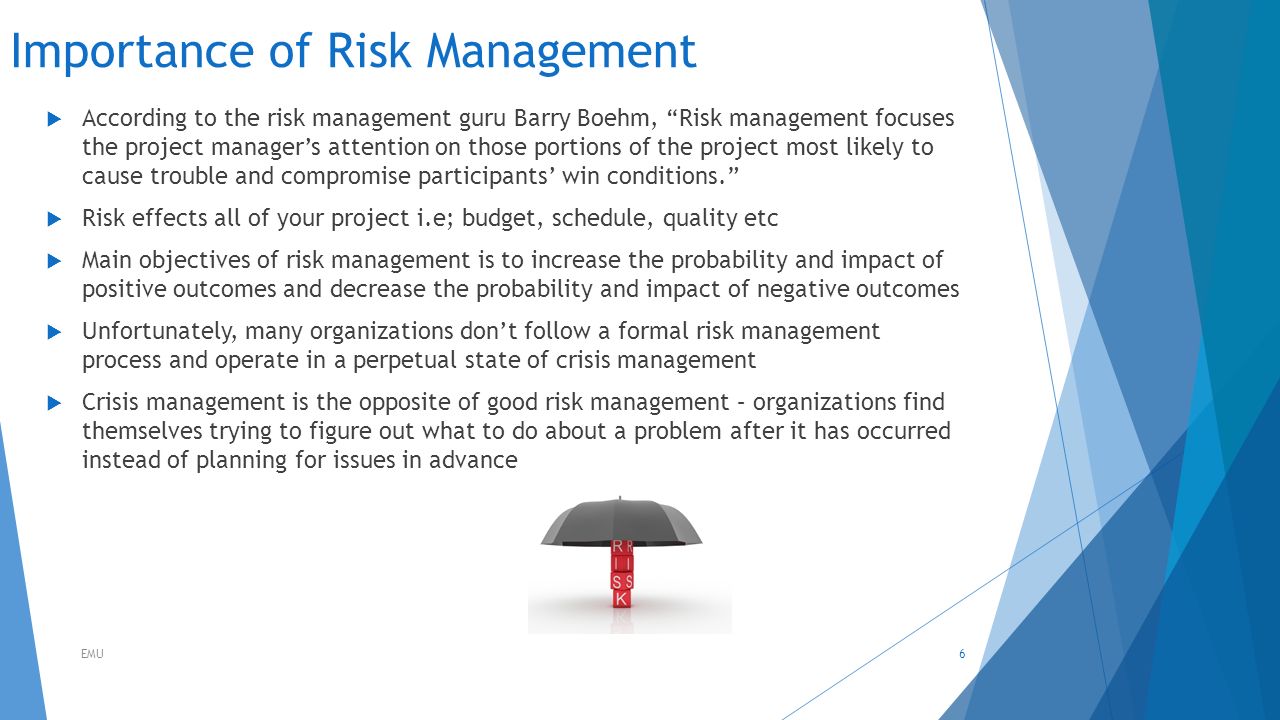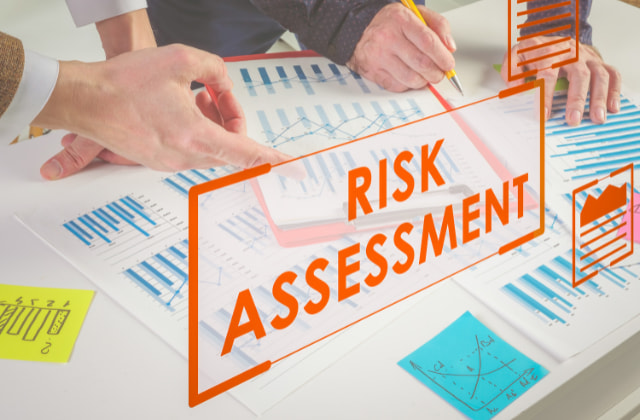The Crucial Importance of Risk Management in Protecting Business Assets
The Crucial Importance of Risk Management in Protecting Business Assets
Blog Article
Discovering the Significance of Risk Management for Effective Decision-Making Approaches
In the complex globe of service, Risk Management arises as a crucial element in the decision-making procedure. The capability to identify prospective hazards and possibilities, and strategize as necessary, can mean the difference in between success and failure.
Understanding the Idea of Risk Management
Risk Management, a vital component in decision-making, is commonly misinterpreted or oversimplified. Risk Management includes structured and self-displined techniques, utilizing information and insightful evaluations. From financial unpredictabilities, lawful obligations, tactical Management errors, to accidents and all-natural catastrophes, it deals with different dangers - importance of risk management.
The Role of Risk Management in Decision-Making Processes
In the realm of strategic preparation and business operations, Risk Management plays an indispensable duty in decision-making processes. It assists in determining potential dangers and uncertainties that can impact the achievement of service goals. By mapping these dangers, business can create approaches to minimize their effect, ensuring organization connection and stability. Risk Management hence comes to be an essential device in decision-making, assisting leaders to make informed options based upon a comprehensive understanding of the risks included. It motivates an aggressive strategy, making it possible for companies to prepare and anticipate for possible future situations. This substantially minimizes the chance of adverse consequences, promoting much more efficient and effective decision-making techniques. Consequently, Risk Management acts as a crucial part in the decision-making processes of any kind of company.

Exactly How Risk Management Improves Strategic Preparation
In the context of critical preparation, Risk Management plays an essential duty. Launching with the recognition of possible dangers, it additionally expands to the execution of Risk mitigation steps. The duty of Risk Management is not fixed however dynamic, as it requires continuous monitoring and adjusting of approaches.
Identifying Potential Threats

Implementing Risk Mitigation
Having established the relevance of recognizing potential risks, the next step is to explore Risk mitigation. This process involves developing and executing methods to take care of identified risks effectively. It is a vital facet of critical preparation as it enhances decision-making by lessening possible unfavorable end results. Risk mitigation methods can vary from Risk evasion, Risk transfer, to risk reduction. Each technique should be customized to the specific Risk, considering its possible influence and the company's Risk resistance. In addition, reliable Risk reduction needs a deep understanding of the Risk landscape and the potential impact of each Risk. This understanding enables organizations to focus on risks and assign sources efficiently, guaranteeing that one of the most considerable hazards are attended to initially.
Monitoring and Adjusting Strategies
Though Risk reduction is a critical step in calculated planning, constant surveillance and modification of these approaches is similarly essential. It additionally offers a chance to evaluate the success of the Risk Management measures, enabling changes to be made where required, more improving strategic planning. Surveillance and readjusting Risk Management strategies is a crucial part for boosting a company's resilience and critical planning.
Situation Studies: Effective Risk Management and Decision-Making
In the globe of organization and finance, successful Risk Management and decision-making often serve as the pillars of flourishing enterprises. These situations highlight the worth of astute Risk Management in decision-making procedures. These cases highlight the crucial duty of Risk Management in critical decision-making.
Tools and Strategies for Efficient Risk Management
Browsing the intricate puzzle of Risk Management requires the ideal set of devices and methods. These devices, such as Risk signs up and heat maps, help in identifying and analyzing prospective risks. Strategies consist of both quantitative methods, like level of sensitivity evaluation, and qualitative techniques, such as SWOT analysis. These assistance in prioritizing dangers based on their possible influence and chance. Risk feedback approaches, a key part of Risk Management, entail accepting, preventing, transferring, or mitigating threats. Tracking and managing dangers, with regular audits and reviews, ensure that the approaches continue to be effective. With these techniques and tools, decision-makers can browse the complex landscape of Risk Management, therefore facilitating informed and efficient decision-making.
Future Trends in Risk Management and Decision-Making Approaches
As we discover the huge landscape of Risk Management, it ends up being obvious that the tools and techniques used today will remain to develop. Future patterns point towards an increased reliance on technology, with artificial intelligence and artificial intelligence playing substantial duties. These modern technologies will certainly make it possible for organizations to predict potential risks with greater accuracy and make more educated choices. Additionally, there will certainly be a growing focus on strength, not just in taking care of dangers but additionally in recovering from damaging circumstances. The idea of Risk culture, where every participant of an hop over to here organization is mindful and included in Risk Management, will certainly acquire more importance. These trends proclaim a more inclusive and aggressive method towards Risk Management and decision-making.
Final thought

Risk Management thus becomes a vital go device in decision-making, aiding leaders to make educated options based on an extensive understanding of the risks involved. Risk mitigation techniques can vary from Risk avoidance, Risk transfer, to take the chance Read More Here of decrease (importance of risk management). Efficient Risk mitigation calls for a deep understanding of the Risk landscape and the prospective impact of each Risk. Risk response strategies, a vital part of Risk Management, entail approving, preventing, transferring, or mitigating risks. The idea of Risk society, where every member of an organization is aware and entailed in Risk Management, will obtain more prestige
Report this page